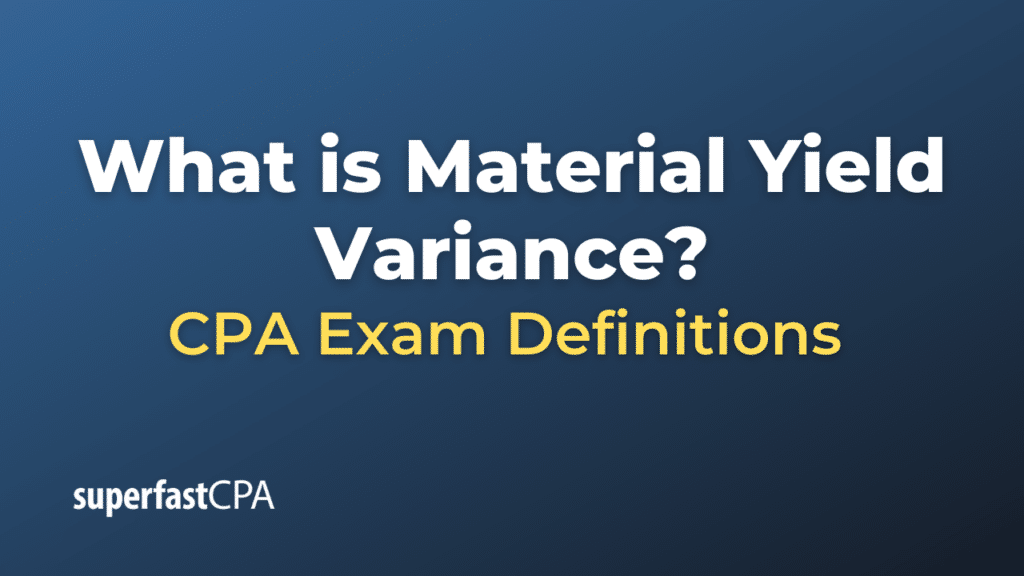Material Yield Variance
Material yield variance is a specific type of variance in cost accounting that measures the difference between the actual output of a production process and the standard or expected output, given the amount of material that was used.
This can be helpful in identifying inefficiencies in the production process. A positive yield variance indicates that the production process was more efficient than expected (i.e., more output was generated from a given amount of input), while a negative yield variance suggests the process was less efficient (i.e., less output was generated from a given amount of input).
Here’s an example:
Suppose a bread factory expects to produce 1,000 loaves of bread from 500 kg of flour. If the factory only manages to produce 900 loaves from 500 kg of flour, there’s a negative material yield variance indicating inefficiency in the production process. Conversely, if the factory manages to produce 1,100 loaves from the same 500 kg of flour, there’s a positive material yield variance indicating an efficient use of materials.
Calculating material yield variance can provide valuable information about a company’s production process and help identify areas for potential improvement.
Example of Material Yield Variance
Let’s take a closer look at the bread factory example.
Standard/Expected Output: A bakery expects that every 100 kilograms of flour should produce 200 loaves of bread.
Actual Production: However, due to inefficiencies in the production process (like wastage or unskilled labor), the bakery is only able to produce 180 loaves of bread from 100 kilograms of flour.
Now, let’s calculate the Material Yield Variance:
Material Yield Variance = (Actual Quantity Produced – Standard Quantity of Output) x Standard Cost Per Unit
Let’s say the standard cost per unit of bread is $2. Therefore,
Material Yield Variance = (180 loaves – 200 loaves) x $2 = -$40
The negative value represents an unfavorable variance, which in this case suggests that there was a loss or inefficiency in production as the actual output of bread was less than the expected output.
This unfavorable material yield variance indicates a need for the bakery to look into its production process and identify where it’s losing materials or efficiency – perhaps the dough is being wasted, or the machines need maintenance. This helps in making the necessary adjustments to improve the yield in future production cycles.













